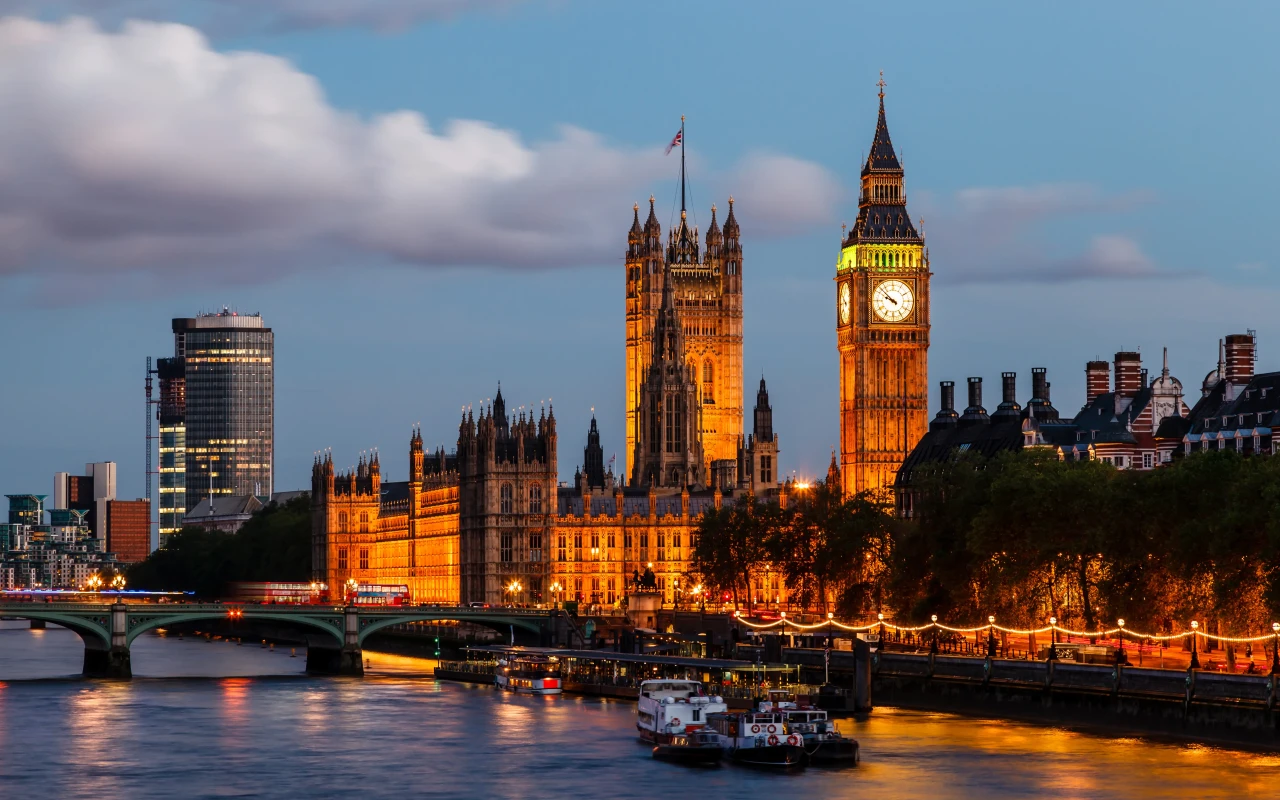Museums & Galleries
Landmarks & Heritage
Food & Drink
Entertainment & Lifestyle
Nature & Outdoors
Museums and Art Galleries
1. Explore The British Museum

Embarking on a cultural journey through the British Museum is akin to traversing the annals of human history, delving into the soul of civilizations that have shaped our world. Nestled in the heart of London, this monumental institution is not merely a museum; it is a treasure trove of human creativity, intellect, and endeavor. Established in 1753, it boasts an expansive collection that spans over two million years of history, making it an unparalleled destination for those seeking to immerse themselves in the rich tapestry of global cultures and heritages.
The British Museum's collection is vast and varied, offering a ...
Historical Sites
2. The Tower Of London: A Fortress Of History And Intrigue
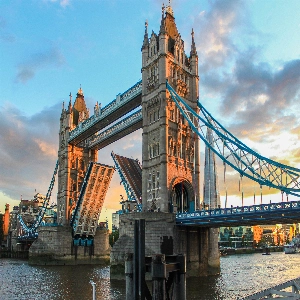
Stepping into the Tower of London is like walking through the pages of history, each stone telling a story of power, intrigue, and survival. Looming majestically over the River Thames, this UNESCO World Heritage Site invites travelers to delve into England's rich and sometimes tumultuous past. From its inception in 1066 as a symbol of Norman conquest, the Tower has evolved through its role as royal residence, treasury, menagerie, and most infamously, as a prison and execution site. Today, it stands as a captivating testament to the various epochs that have shaped England.
What makes the Tower of London a ...
Landmarks and Monuments
3. Visit Buckingham Palace
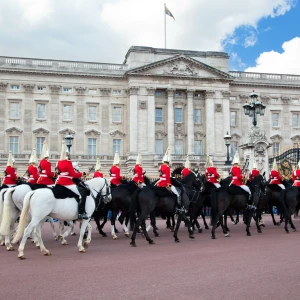
Stepping into the heart of London, the grandeur of Buckingham Palace awaits, a symbol of royal elegance and British culture. This iconic residence of the British monarch, not merely an architectural marvel, unfolds itself as a narrative of history, power, and grandiosity, inviting visitors from around the globe to witness its splendor. For those yearning to delve into the majesty of British royalty, a visit to Buckingham Palace becomes an indispensable chapter of their travel journey.
The palace's stately facade, framed by the bustling streets of London, stands as a testament to architectural evolution, with its origins dating back to ...
4. Experience The London Eye
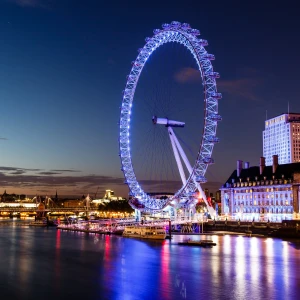
Embarking on a journey to London, one cannot ignore the magnetic allure of the London Eye. This colossal Ferris wheel not only dominates the city's skyline but also encapsulates the essence of modern London. As an iconic symbol of innovation and leisure, the London Eye offers its visitors not just a ride but an experience – a passage through London's past, present, and future, all from the remarkable vantage point of 135 meters above the River Thames. Since its inauguration at the turn of the millennium, it has captivated millions with its slow-moving but exhilarating ascent into the skies of ...
Museums and Art Galleries
5. Discover The Tate Modern

Perched majestically on the banks of the River Thames, the Tate Modern stands as a beacon of contemporary and modern art in the heart of London. This former power station turned art gallery has, since its opening in the year 2000, emerged as one of the most beloved and visited destinations for art lovers around the globe. Its industrial facade, characterized by a towering chimney and a modernist brick structure, paints a stark contrast to the creative innovations housed within. As a travel writer with a deep appreciation for the arts, I've found that exploring the Tate Modern is not ...
Religious and Spiritual Sites
6. Westminster Abbey
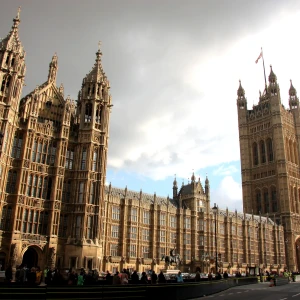
Westminster Abbey, a remarkable architectural masterpiece, stands as a symbol of Britain's rich history and tradition. Situated in the heart of London, this Gothic church is more than a place of worship; it's a historical tapestry, weaving together the lives of monarchs, poets, scientists, and politicians who have shaped the nation.
Since its founding in the 10th century, Westminster Abbey has been intrinsically linked to British history. The current structure, initiated by Henry III in 1245, is a testament to the Gothic architectural style's splendor. Its intricate spires, stunning stained glass windows, and detailed sculptures capture the essence of an ...
Landmarks and Monuments
7. Visit The Houses Of Parliament

Delving into the heart of London, a city steeped in history and grandeur, one landmark stands out as a beacon of democracy and architectural splendor: the Houses of Parliament. Officially known as the Palace of Westminster, this iconic edifice is not just a focal point for political aficionados but also a treasure trove for travelers seeking to immerse themselves in England's rich tapestry of history and culture. A visit to the Houses of Parliament is more than a mere sightseeing tour; it's a journey through the annals of time, where the echoes of pivotal moments in British history resonate in ...
8. Walk Across Tower Bridge

Embarking on a journey across Tower Bridge is like stepping into a living piece of history, stretched over the River Thames. This iconic landmark, easily recognizable by its two majestic towers, stands as a testimony to the innovative Victorian engineering of its time. Designed by Sir Horace Jones and officially opened in 1894, this bridge is not merely a route of passage but a destination in itself, offering a raw, immersive experience into London's historical and architectural grandeur.
As you approach the bridge, the intricate details begin to unfold; the high-level walkways, once the exclusive path of the working Londoner, ...
9. Enjoy The Views From The Shard
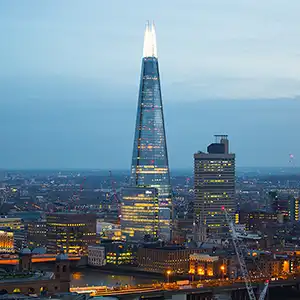
Perched high above London's bustling streets, The Shard stands as a testament to modern architecture and human ambition. When it comes to truly appreciating the vastness and beauty of one of the world's most iconic cities, there is no place more fitting than The Shard's viewing platforms. As a travel writer who has ventured to countless awe-inspiring locations across the globe, the experience offered by The Shard remains unparalleled in many respects. It provides not just views, but a unique perspective on London's historic and modern landmarks woven seamlessly together.
Ascending the 95-story skyscraper is an experience in itself. The ...
10. Visit Kensington Palace
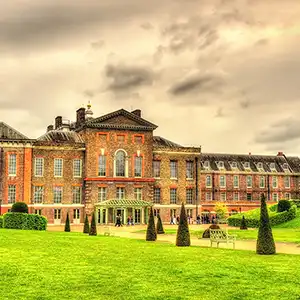
When one embarks on a journey to London, the city welcomes the traveler with its rich tapestry of history, culture, and stunning architecture. Tucked away in the lush, verdant expanses of Kensington Gardens lies a gem that has been a cornerstone of British royal history for over three centuries — Kensington Palace. This magnificent edifice is not just a monument; it's a living museum, a royal residence, and a treasure trove of stories that beckon to be explored. For the discerning traveler seeking a blend of regal elegance and historical profundity, a visit to Kensington Palace promises an unforgettable adventure.
...11. Walk Through Trafalgar Square
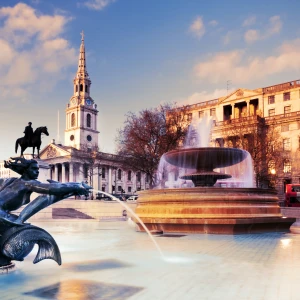
Walking through Trafalgar Square is akin to taking a stroll through the beating heart of London's cultural and historical landscape. This iconic square, named after the 1805 Battle of Trafalgar, serves not only as a reminder of Britain's naval prowess but also as a central meeting point where art, culture, and history collide in the most spectacular fashion. As you step onto the vast expanse of the square, the first thing that captures your attention is the towering Nelson's Column. Standing vigil over the square, Admiral Horatio Nelson surveys the city from atop his column, a tribute to his victory ...
12. Big Ben

Big Ben, the nickname for the Great Bell of the clock at the north end of the Palace of Westminster in London, stands as an emblematic symbol of both the city and the United Kingdom. This iconic landmark, part of the larger structure known as the Elizabeth Tower, resonates with historical significance and architectural grandeur, drawing visitors from around the globe.
Constructed in 1859, Big Ben is housed within the Elizabeth Tower, which was completed in the same year as part of Charles Barry's design for the new Palace of Westminster following the 1834 fire. The tower, standing at 316 ...
Museums and Art Galleries
13. Visit The Royal Observatory In Greenwich
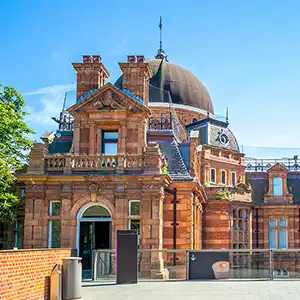
Embarking on a journey to the Royal Observatory in Greenwich, London, is akin to taking a magnificent dive into the very heart of time and space. Established in 1675 by King Charles II and designed by the acclaimed Sir Christopher Wren, this historic observatory is not only a monumental site but also the birthplace of Greenwich Mean Time (GMT), making it a pivotal landmark in the chronicles of navigation and astronomy. As a travel writer deeply engrossed in the wonders our world has to offer, I find the observatory's blend of scientific heritage and architectural marvel to be a unique ...
14. Visit The British Library
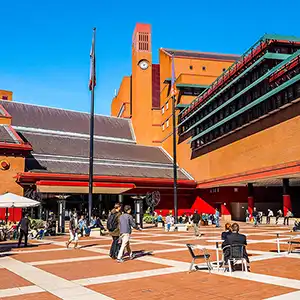
Nestled in the heart of London, the British Library stands as a colossal beacon for book enthusiasts, historians, and curious travelers alike. As the national library of the United Kingdom, it houses an impressive collection of items from all over the globe, spanning over millennia. The scope and diversity of its holdings, from the Magna Carta and Shakespeare's First Folio to ancient maps and sound archives, make it an indispensable repository of human knowledge and achievements. A visit to the British Library is not just an exploration of its extensive collections but a journey through the corridors of world history, ...
15. Discover The National Portrait Gallery
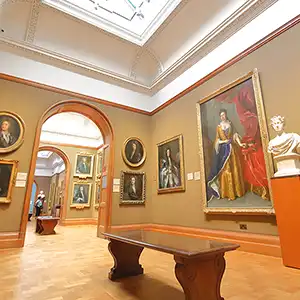
Embarking on a journey to explore the cultural and artistic heart of London leads us to the splendid National Portrait Gallery, a sanctuary that houses the essence of Britain's historical figures and modern-day icons through the art of portraiture. Established in 1856, it stands as the first portrait gallery in the world, boasting an extensive collection that encapsulates the richness of British history, art, and identity. From kings, queens, and statesmen to artists, writers, and celebrities, the gallery’s collection spans over centuries, offering a unique lens through which to view the changing faces of Britain.
Visitors to the National Portrait ...
16. Explore The Tate Britain

Stepping into the Tate Britain, one is immediately enveloped in the grand narrative of British art, a saga that unfolds across its majestic galleries. Established in the final year of the 19th century, this iconic institution serves as the nucleus of British art, spanning from the 1500s to the present day. Its gracefully aged walls are a testament to the evolution and dynamism of Britain's cultural landscape, offering visitors a journey through time where the whispers of history and creativity meet.
One of the most fascinating aspects of the Tate Britain is its commitment to showcasing the breadth and depth ...
Shopping
17. Shop At Harrods

Nestled in the heart of Knightsbridge, London, Harrods isn't just a department store; it's an emblem of luxury shopping that has enchanted the world over for more than 170 years. The legendary establishment sprawls over a 5-acre site and boasts more than 330 departments, making it the largest department store in Europe. A visit to Harrods is not just a shopping expedition; it's a dive into a world where the heights of opulence meet the pinnacles of retail experience. As a travel writer who has roamed the corridors of numerous shopping paradises across the globe, I find Harrods to stand ...
Parks and Nature
18. Wander The Oasis Of Hyde Park: A Tranquil Escape In The Heart Of London
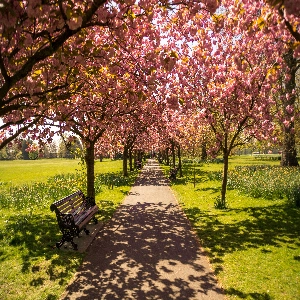
Hyde Park, nestled in the heart of London, serves as both a serene escape from the bustling city life and a historical treasure trove waiting to be explored. Stretching over 350 acres, this vast expanse of greenery and open water makes for an idyllic backdrop for both leisurely strolls and deep dives into the park's rich past. As one embarks on a walk through Hyde Park, it isn't just about traversing from one end to the other; it's a journey through time, witnessing the evolution of one of the city's most beloved spaces.
The entrance at Hyde Park Corner, grand ...
19. Explore The Royal Botanic Gardens

Embarking on a journey to London's Royal Botanic Gardens, Kew, immerses visitors into an enchanting world where nature's splendor is showcased at its finest. Spanning over 300 acres alongside the River Thames, Kew Gardens stands as a testament to centuries of plant cultivation, botanical research, and a passionate commitment to biodiversity and environmental conservation. This prestigious site is not just a garden; it's an expansive living library of over 50,000 different species, making it an invaluable resource for botanists, researchers, and plant enthusiasts from around the globe.
The history of Kew Gardens is as rich and diverse as the plant ...
20. Walk Along The Thames Path
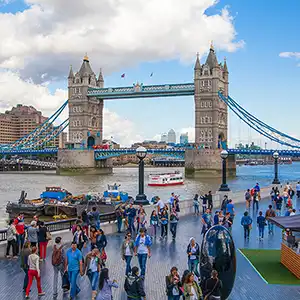
The Thames Path, a captivating trail that meanders alongside one of the most iconic rivers in the world, offers travelers an immersive experience into the heart of England's scenic beauty and rich history. Stretching approximately 184 miles from the Cotswolds through to the heart of London and out to the Thames Barrier in Greenwich, this path serves as a testament to the enduring relationship between the river and the communities that have flourished along its banks. Every step along the Thames Path reveals a new chapter in England's story, inviting walkers to embark on a journey that is as picturesque ...
Historical Sites
21. Explore The Churchill War Rooms

Nestled deep beneath the bustling streets of London lies a historical treasure that transports visitors back to one of the most pivotal times in British history: the Churchill War Rooms. This once-secret wartime bunker, hidden from the eyes of both the British public and enemy spies alike, served as the nerve center for Britain's war efforts during the dark days of World War II. The complex, which comprises the Cabinet War Rooms and the Churchill Museum, offers an immersive glimpse into the life and legacy of Sir Winston Churchill, the indomitable British Prime Minister whose leadership steered Britain through its ...
22. Discover The Imperial War Museum
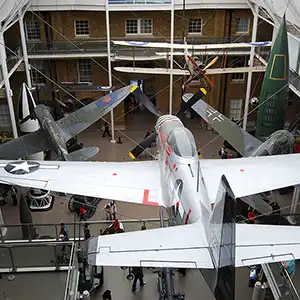
When wanderlust merges with an appetite for history, the Imperial War Museum in London emerges as a quintessential destination. Nestled in the heart of London, this museum is not just a repository of war paraphernalia; it is a poignant reminder of the resilience of human spirit, the horrors of war, and the quest for peace. With its inception during the First World War, the museum aimed to record the then-ongoing conflict's impact. However, it has since evolved to encompass narratives from conflicts all around the globe, spanning from the First World War to the present times. Its vast, haunting, yet ...
Entertainment and Culture
23. Visit Shakespeare's Globe Theatre

Nestled on the banks of the River Thames in the bustling heart of London, Shakespeare's Globe Theatre stands as a testament to the enduring legacy of William Shakespeare, arguably the greatest playwright in the English language. A reconstruction of the original Elizabethan playhouse for which Shakespeare penned his iconic plays, visiting the Globe offers a rare window into the past, allowing one to step into the world of Hamlet, Macbeth, and Juliet, among countless other timeless characters.
The experience of attending a performance at Shakespeare's Globe is unparalleled, seemingly transporting audiences back to the late 16th and early 17th centuries. ...
24. Experience The Notting Hill Carnival

Exploring the charming neighborhood of Notting Hill feels akin to stepping onto the set of a romantic comedy, where every corner promises a new delight or whimsical discovery. Known for its vibrant, pastel-hued townhouses and the bustling Portobello Road Market, Notting Hill offers an enchanting escape into one of London's most picturesque locales. Its streets, buzzing with the energy of locals and travelers alike, are a testament to the area's unique blend of cultural richness and artistic flair.
The heart of Notting Hill is arguably the Portobello Road Market, a haven for antique lovers, food enthusiasts, and vintage fashion collectors. ...
25. Visit The Barbican Centre
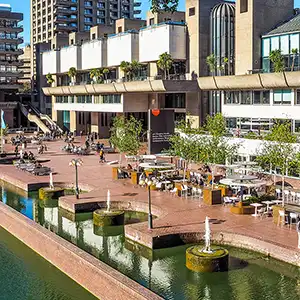
When the heart of London calls to those with a thirst for culture and creativity, the Barbican Centre stands as a beacon for the arts. Nestled in the city's vibrant fabric, this iconic venue is not just a place; it's an experience that transcends the ordinary. The Barbican Centre, Europe's largest multi-arts and conference venue, offers an eclectic blend of music, film, theatre, dance, and visual arts, all under one roof. Its brutalist architecture, a subject of much debate, adds a layer of intrigue, making a visit here not just an artistic journey, but a journey through time and ideology ...
26. Visit Madame Tussauds

Stepping into the world of Madame Tussauds offers an unparalleled journey through glamour, history, and artistry that dates back over 200 years. Born out of the imagination and skilled hands of wax sculptor Marie Tussaud, this famous attraction has morphed into a global phenomenon, captivating millions of visitors each year. The museum pays homage to icons from various realms like entertainment, politics, sports, and even fictional characters, bringing them to life in astonishingly detailed wax figures. Whether you're a history buff, movie fan, or sports enthusiast, Madame Tussauds opens up a universe where you can rub shoulders with your idols ...
27. Visit The O2 Arena
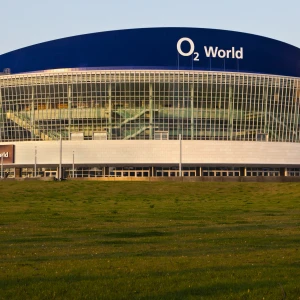
Nestled in the vibrant heart of London is a marvel not just for sports lovers or music aficionados but for anyone with a zest for life and adventure - the O2 Arena. This iconic venue, originally known as the Millennium Dome, has transcended its initial purpose to become a beacon of entertainment, drawing millions from across the globe. Its distinctive dome-shaped silhouette, visible against London's skyline, has become synonymous with world-class entertainment, making a visit to the O2 Arena a must-do on any London itinerary.
Beyond its architectural prowess, the O2 Arena is a universe of experiences waiting to be ...
Local Markets and Bazaars
28. Walk Through Covent Garden
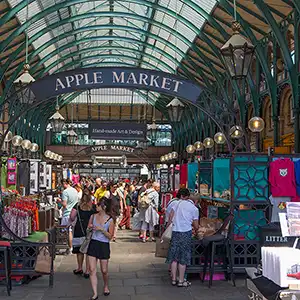
Covent Garden, nestled in the vibrant heart of London, offers an enchanting journey through its cobbled streets, historical buildings, and modern-day marvels. This iconic district, known for its dynamic blend of entertainment, shopping, and culture, beckons visitors with its inimitable charm. As a travel writer who has meandered through countless destinations, Covent Garden stands out for its unique ability to whisk you away into a world where the past and present converge seamlessly.
Begin your exploratory walk at the famous Covent Garden Piazza, the first square in England designed and laid out specifically for entertainment and shopping since the 17th ...
29. Explore Camden Market

Nestled in the heart of North London, Camden Market stands as a vibrant testament to the city's eclectic culture and history. This bustling market, known for its labyrinthine alleys and diverse stalls, serves not just as a shopping destination but as a cultural hub that captures the essence of London's dynamic character. From vintage clothing and handmade crafts to exotic street food, Camden Market offers an array of treasures waiting to be discovered by the intrepid explorer. Since its inception in 1974, the market has grown exponentially, now comprising several markets, each with its unique flair, including the original Camden ...
Music and Performances
30. See A Show In The West End
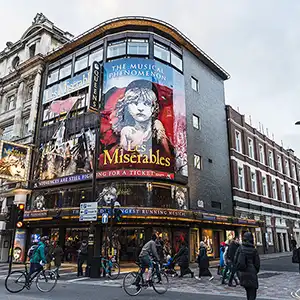
When visiting the vibrant city of London, immersing yourself in the razzle-dazzle of a West End show is an experience like no other. This iconic area, often compared to Broadway in New York, has long been the heart of the theatrical world in the UK, offering a plethora of shows ranging from heart-wrenching dramas and modern musicals to timeless classics. The West End's historic theaters, each with its unique charm and history, beckon visitors from all corners of the globe to witness performances of the highest caliber.
The magic of a West End show begins even before the curtain rises. ...
31. Royal Albert Hall

Nestled in the heart of London, the Royal Albert Hall stands as a grand testament to the arts and a symbol of British cultural pride. Since its opening in 1871, this iconic venue has been a hub for the world's leading performances in music, dance, and theater, reflecting the UK's rich artistic heritage and its contemporary cultural dynamism.
Commissioned by Prince Albert, Queen Victoria's consort, the hall was envisioned as a space that would democratize access to the arts, making culture available to all strata of society. Its distinctive circular design, inspired by ancient amphitheaters, ensures an intimate experience, drawing ...
Religious and Spiritual Sites
32. Visit St. Paul's Cathedral

As one ventures into the heart of London, the magnificence of St. Paul's Cathedral stands as a testament to Britain's architectural prowess and its indomitable spirit through the ages. Designed by Sir Christopher Wren, this iconic edifice not only dominates the skyline but also serves as a beacon of history, art, and spirituality. For travelers seeking to immerse themselves in the essence of London, a visit to St. Paul's Cathedral is indispensable.
Upon entering St. Paul's, visitors are immediately enveloped in an ambiance that intertwines solemnity with artistic exuberance. The interior of the cathedral is a treasure trove of ...
